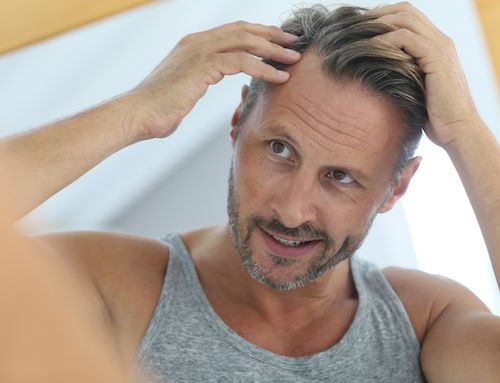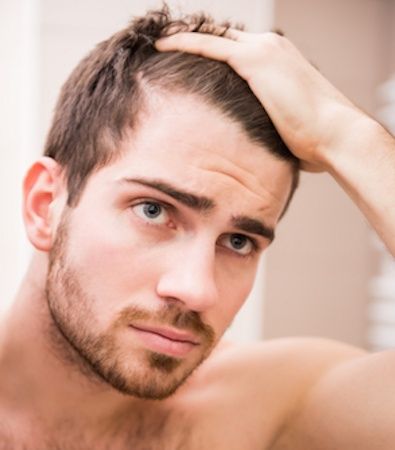Ever experienced sudden hair loss that starts with circular patches or alternatively, progressive hair loss that starts at the hairline or top of the head? Losing hair can be worrying, stressful and even disturbing for some, and the fact that symptoms can be caused by different conditions adds to the anxiety. Alopecia areata and baldness, often confused, are two common forms of hair loss affecting both men and women.
In this article, we explain the differences between androgenetic alopecia (baldness) and alopecia areata, what symptoms to look for and the treatment options available.
If you suffer from hair loss, answer these 3 questions to discover the best treatment option for you.

Alopecia areata or androgenetic alopecia?
Alopecia areata is a disease that causes a complete loss of hair on specific areas of the body. The disease is manifested by one or more circular zones denuded of any hair. The hair-free patches may appear on the scalp, beard, eyebrows, eyelashes or any other hairy area. It can be accompanied by other symptoms: itching, burning sensation in the affected areas and abnormalities in the nails (roughness, loss of shine for example).
The origins of alopecia areata are not well understood – diabetes, stress, psychological shock are potential culprits and it’s not known how to prevent it. However, we do know that certain hereditary factors play a role, involving an autoimmune reaction that leads to the wrongful destruction of the hair follicles by the immune system.
The hairline remains intact and in the majority of cases the condition is temporary and the areas affected eventually heal. However, a relapse is always possible.
Androgenetic alopecia, also referred to as male pattern baldness or female pattern baldness, is not considered a disease, but rather a natural phenomenon of hair loss of hormonal and hereditary origins.
Baldness, the most common form of alopecia, is characterised by the progressive retreat of the hair at the forehead or the top of the head. Over time, the hair becomes finer and the follicles stop being active. Androgenetic alopecia accelerates the natural cycle of the hair, and, little by little, the follicles stop producing hair at all.
Treatments
In the case of alopecia areata, there is no definitive solution, nothing protects against the hair falling or relapse. However, managing stress and anxiety is important and topical scalp medication may assist, or treatments such as PRP or LED Light Therapy can help stimulate hair regrowth by stimulating hair follicles to enter the normal growth process.
In contrast, in the case of androgenetic alopecia, micro-transplant hair transplant can be used to fill and add density to the bald and thinning areas. Today, micro-transplant is the gold-standard solution, with the technique offering a natural and seamless result from just one session. The procedure is completed from start to finish by a certified Doctor, with natural results guaranteed. No scalpels, no stitches and attention to detail for each individual patient, the procedure leaves no mark or scar.
Book Your Diagnosis Consultation
If you are suffering from alopecia, but are not sure what type, the first step is to book a consultation with a Gro hair growth specialist. During your private consultation, you will receive a correct diagnosis for your hair loss and the opportunity to discuss the various treatment options, customised to your particular condition.
Simply click on one of the buttons below to book a consultation or ask a question. Alternatively, you can call us on 1300 787 563.












